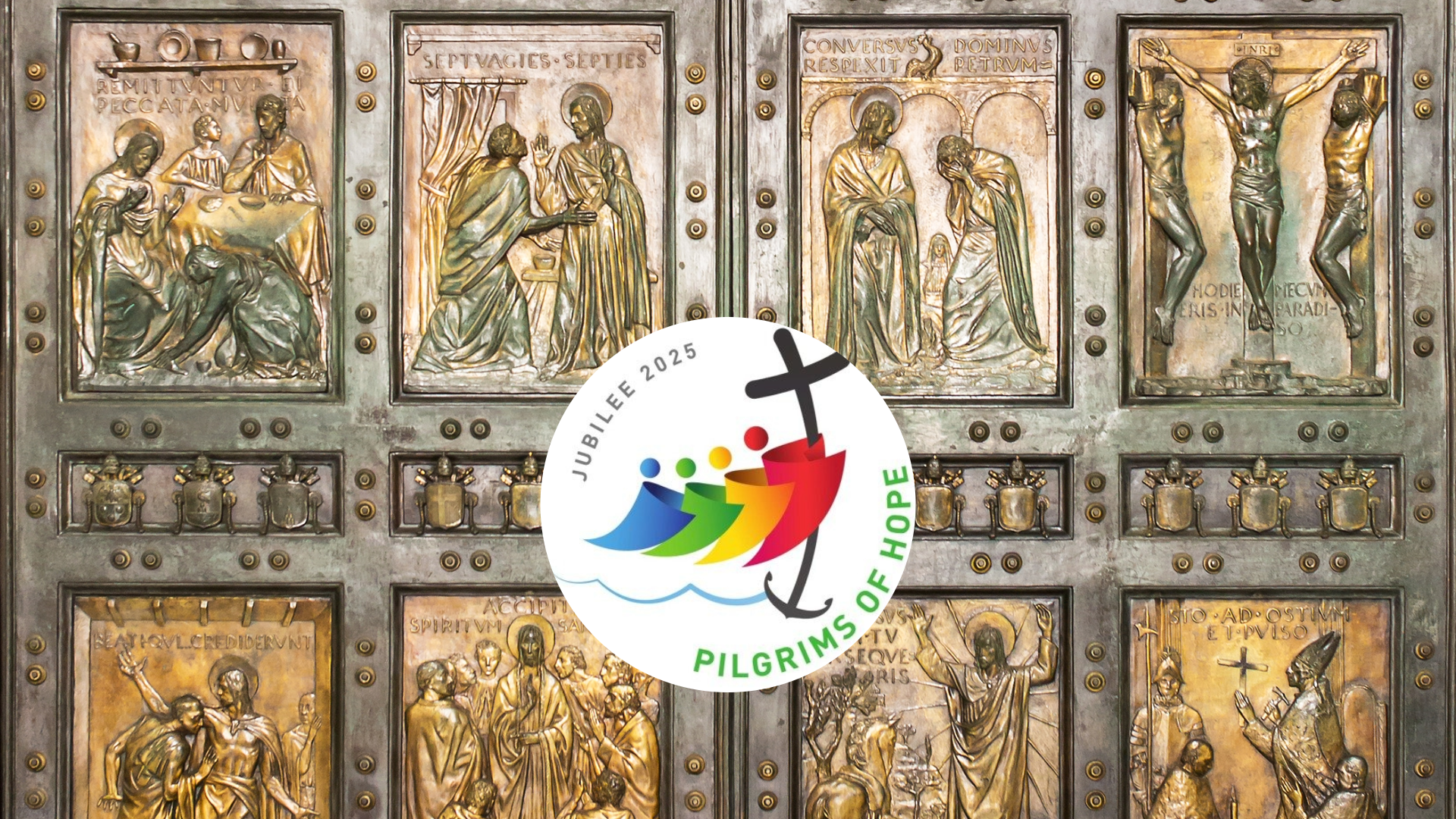The 2025 Jubilee Year: What You Need to Know
On Christmas Eve, at St. Peter’s Basilica in Rome, Pope Francis will open the Holy Doors to the Basilica in a ceremony that will officially inaugurate the Jubilee Year 2025, which will run from Dec. 24, 2024 to Jan. 6, 2026.
What is a Jubilee Year, and what do you need to know about it?
Jubilee Year Origins
The origins of the Jubilee Year go back to the Old Testament. According to Leviticus 25:8-25, Jubilee Years were times when debts were forgiven, slaves were set free, families were restored to their ancestral inheritance, and the whole nation of Israel was to rest in God’s blessing.
In Leviticus 25, God commanded the Israelites to observe a “sabbatical year” every seventh year. It was a year without sowing or reaping, when even the land was given rest. After the seventh sabbatical year, the fiftieth year would be called a Jubilee, a year of celebration and rest dedicated to the Lord. Debts were forgiven, slaves freed, and property returned. One of the the greatest examples of social and communal mercy in the Old Testament, the Jubilee allowed the people to learn mercy by giving mercy.
Joan Watson, Opening the Holy Door
The word “jubilee” comes from the Hebrew word “yobel,” the name of the ram’s horn which was blown to signify the start of the holy year.
Like so much of what is contained in the Old Testament, we find the Jubilee idea of a special time of mercy fulfilled in Christ. In a reflection written on the Jubilee Year, Pope Francis says that, “Jesus embraced the concept of the Jubilee and gave it new and ultimate meaning.” In Luke 4:16-21, Jesus proclaims the opening words of Isaiah 61, describing “a year acceptable to the Lord” and declares these words to have been “fulfilled in your hearing.” Pope Francis reminds us that Jesus “revealed Himself as the face of God on earth, sent to redeem the poor, free captives, and manifest the Father’s compassion for the wounded, the fallen, and the hopeless.”
“The Spirit of the Lord is upon me, because he has anointed me to bring glad tidings to the poor. He has sent me to proclaim liberty to captives and recovery of sight to the blind, to let the oppressed go free, and to proclaim a year acceptable to the Lord.”
Rolling up the scroll, he handed it back to the attendant and sat down, and the eyes of all in the synagogue looked intently at him. He said to them, “Today this scripture passage is fulfilled in your hearing.”
Luke 4:18-21
Jubilee Years in the Church
The Catholic Church renewed the practice of celebrating Jubilees in the Middle Ages as a sign of mercy during times of special hardship.
In 1299, when times were hard due to the effects of plague, war, and material hardship, thousands of Christians eager to amend their lives and seek God’s blessing made a pilgrimage to Rome, asking for God’s blessing and the protection of the apostles. At the time, it wasn’t easy to travel to Rome, and Pope Boniface VIII was so inspired by their faith that he declared 1300 a “year of forgiveness for all sins.” Special graces were attached to visiting the tombs of St. Peter and St. Paul.
Joan Watson, Opening the Holy Door
Originally Jubilees were to be celebrated at 100 year intervals. However, in 1343 Pope Clement VI increased the frequency to every 50 years, and in 1470, Pope Paul II declared that ordinary Jubilees would be celebrated every 25 years in the Church.
Sometimes popes have called for extraordinary Jubilees to be celebrated outside of this 25 year cycle. For example, in 1983 a special Jubilee was called by Pope John Paul II to celebrate the 1950th anniversary of the Resurrection, and in 2015 Pope Francis called for a Jubilee Year of Mercy.
Jubilee Years are times of special emphasis on God’s mercy, peace and reconciliation, spiritual growth, and renewing our life of faith. They are marked by prayer, works of charity and penance, and pilgrimages (especially to Rome).
What are the Holy Doors?
Pilgrimages to Rome typically include a visit to the four major Roman Basilicas. These historic churches are:
- St. Peter’s Basilica
- St. John Lateran
- St. Mary Major
- St. Paul Outside the Walls
In addition to the usual entrances, each of these basilicas feature a special set of double doors which are normally bricked in. During Jubilee Years, the masonry is removed to allow the doors to be opened. The faithful who pass through these doors on pilgrimage are able to obtain plenary indulgences, removing the temporal punishment for sins.
The ceremonial opening of the Holy Door at St. Peter’s Basilica by the Pope inaugurates the official start of the Jubilee Year. Here is a video clip of the last time Pope Francis opened the Holy Doors in 2015.
What is the Theme of this Jubilee Year?
It is common for modern Jubilee Years to have a special theme, or emphasis, chosen by the Holy Father. In the papal bull Spes non confundit (“Hope does not disappoint”), Pope Francis announced that the Jubilee Year 2025 will focus on hope.
“Hope is also the central message of the coming Jubilee that, in accordance with an ancient tradition, the Pope proclaims every twenty-five years. My thoughts turn to all those pilgrims of hope who will travel to Rome in order to experience the Holy Year and to all those others who, though unable to visit the City of the Apostles Peter and Paul, will celebrate it in their local Churches. For everyone, may the Jubilee be a moment of genuine, personal encounter with the Lord Jesus, the “door” (cf. Jn 10:7.9) of our salvation, whom the Church is charged to proclaim always, everywhere and to all as “our hope” (1 Tim 1:1).
Pope Francis, Spes non confundit
How Will the Jubilee Year be Marked in the Diocese of Charlotte?
Bishop Michael Martin will mark the opening of the Jubilee Year with special Masses of Hope celebrated at three locations in our diocese.
- St. Lawrence Basilica in Asheville, Dec. 28 at 5:00 PM
- St. Pius X in Greensboro, Dec. 29 at 1:30 PM
- St. Mark in Huntersville, Dec. 29 at 5:00 PM
He will mark the official close of the Jubilee Year with the following Masses.
- St. Lawrence Basilica in Asheville, Jan. 3, 2026, at 5:00 PM
- St. Pius X in Greensboro, Jan. 4, 2026, at 1:30 PM
- St. Mark in Huntersville, Jan. 4, 2026, at 5:00 PM
A diocesan pilgrimage to Rome is scheduled for Nov. 14-24, 2025.
St. Mary Mother of God parish in Sylva is also planning a Jubilee Pilgrimage for May 12-20, 2025.
I warmly urge you to embrace the Church’s 2025 Jubilee Year with open hearts. This sacred time is a profound gift, inviting us to renew our faith, seek reconciliation, and rediscover the boundless mercy of God.
Bishop Michael Martin
Learn More About the Jubilee Year
We invite you to learn more about the Jubilee Year 2025, “Pilgrims of Hope,” by exploring the following resources.
- The official Vatican Jubilee Year website
- The Jubilee Year website for the Diocese of Charlotte
- The papal bull Spes non confundit announcing the Jubilee Year
- Information about St. Mary’s parish Jubilee Year pilgrimage
- A reflection by Pope Francis on the Jubilee Year
- Watch the “Jesus and the Jubilee” series of videos by Dr. John Bergsma or order a copy of his book.

